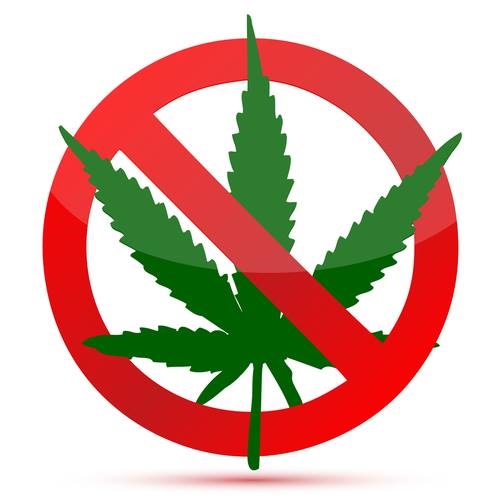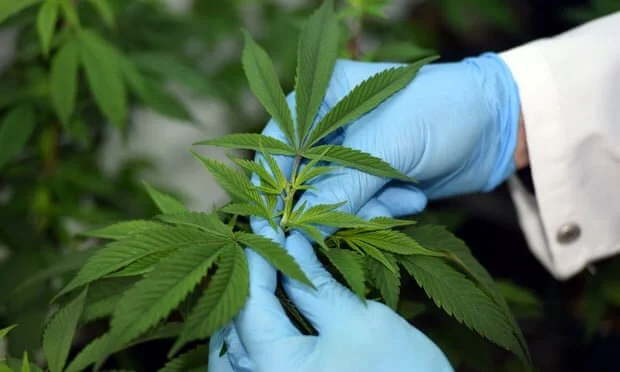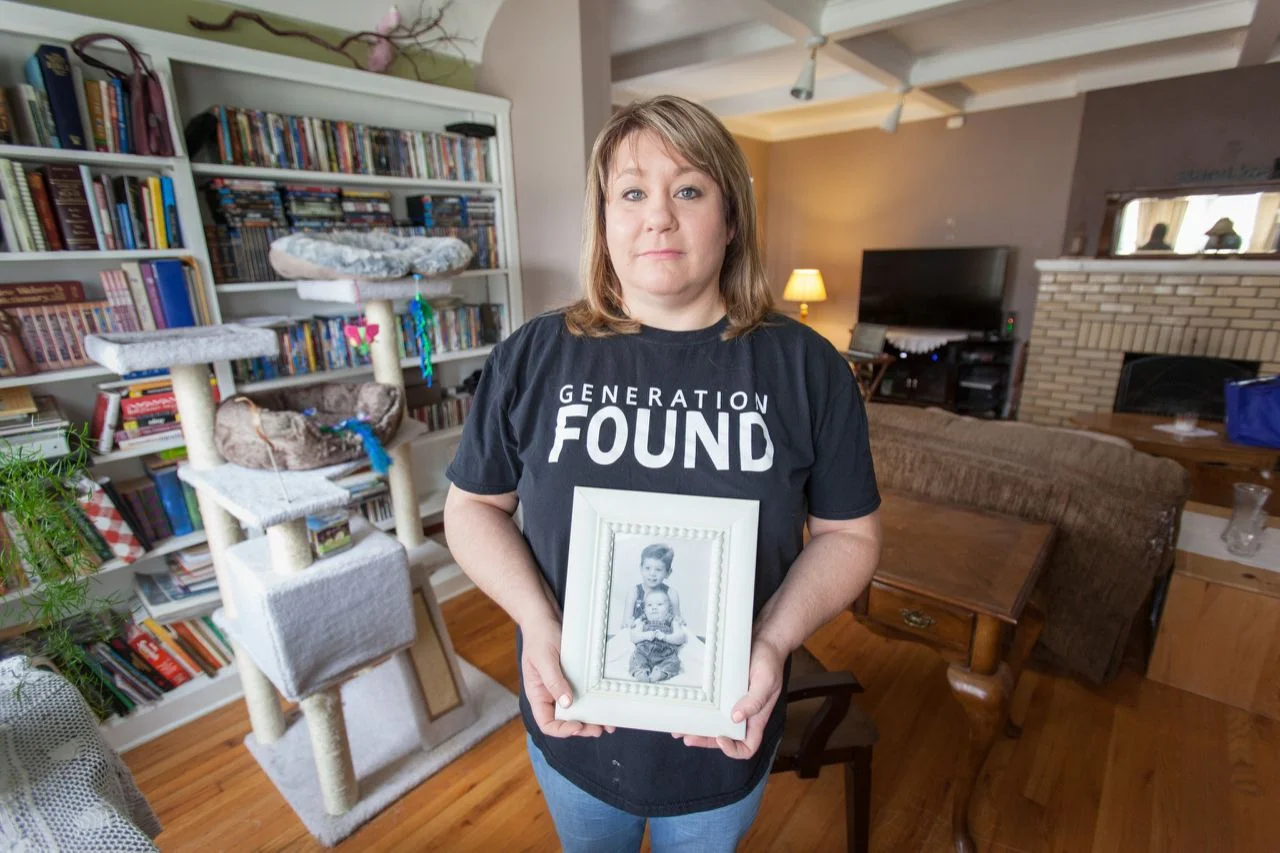Reshaping your mind isn’t always a great idea.
Read MoreStay in the know with the latest on our fight against the legalization of marijuana
Have an article that you would like us to post? Share it on our Facebook page!
Cannabis and chronic pain: does the case for medicinal use stack up?→
/Two expert groups have recently recommended against medicinal cannabis for people suffering persistent non-cancer pain
Read MoreCannabis: Misinformation about CBD can be life-threatening→
/Hyperbole can be rampant in health news, particularly with respect to cannabis. One recent headline declared: "CBD is effective in treating heroin addiction." Another proclaimed: "New study finds CBD could curb heroin addiction."
These stories were referring to a recent study in the American Journal of Psychiatry that found a short-term course of cannabidiol (CBD) reduced cue-induced cravings and anxiety in drug-abstinent individuals who were recovering from opioid use disorder, specifically heroin addiction.
This study is undoubtedly exciting and a welcome contribution to the scientific literature demonstrating the potentially helpful role of cannabinoids in the treatment of opioid use disorder.
That said, there is a mismatch between these headlines and the accurate interpretation of the findings from the study. And this mismatch is not trivial.
Medicinal uses of cannabidiol
CBD is one of many phytocannabinoid compounds found in the plant cannabis sativa. It is quickly gaining traction as a legitimate medicine in the medical community. For example, it has been associated with benefits in treating some neurological disorders and has recently been FDA-approved for the treatment of seizures in people with Lennox-Gastaut syndrome, a severe form of epilepsy.
Further, unlike its sister cannabinoid, delta-9-tetrahydrocannabinol (THC), CBD is largely non-intoxicating and therefore is thought to be non-addictive. It also appears to be relatively safe to use. It's no wonder CBD has garnered so much excitement and positive attention.
That said, scientific enterprise is a slow-moving and cautiously critical machine, and we still have much to learn about the medicinal uses of CBD. In fact, there remains a substantial gap between the hype surrounding CBD and the actual evidence guiding its medicinal use.
Participants already abstinent
In the study published in the American Journal of Psychiatry, the researchers recruited 42 people recovering from opioid use disorder (specifically heroin) and randomly allocated them to either a treatment group (to receive 400 or 800 milligrams of CBD once a day) or a control group (to receive a placebo once a day).
An important aspect of the study is that participants were already abstinent, not actively using heroin, and not experiencing heroin withdrawal. In other words, the participants were in recovery and CBD was not used to treat their withdrawal or maintain tolerance. It was instead used to help treat cravings for heroin and anxiety that were experimentally induced (for example, by showing participants videos and objects related to heroin use) that could lead to relapse.
The researchers concluded: "CBD's potential to reduce cue-induced craving and anxiety provides a strong basis for further investigation of this phytocannabinoid as a treatment option for opioid use disorder."
It is worth reiterating and highlighting that the study compared CBD to a placebo group, and did not compare to other opioid agonist treatments, such as therapy with methadone (Methadose) or buprenorphine (Suboxone).
Additionally, and importantly, the participants were abstinent and not in active withdrawal.
Opioid agonist treatments are particularly helpful for the mitigation of opioid cravings and withdrawal. Another therapeutic effect of opioid agonist treatments is that they help people in recovery maintain some level of tolerance to opioids, which is helpful for preventing overdose in the event of relapse.
One particular opioid agonist medication, buprenorphine, even blocks stronger opioids like heroin from working as effectively. CBD, on the other hand, does not provide these important protective effects.
Further, to suggest that CBD is an effective treatment for opioid use disorder is misleading and harmful, as this misinformation could be used to justify not initiating, or discontinuing, opioid agonist medications.
Language matters
The findings from the opioid study are certainly important. Investigations into novel therapies that can help people manage cravings to use drugs such as opioids is a major advancement. If future studies can replicate these findings, especially among people who are experiencing difficulties with management of cravings, then this would lend stronger support to the idea that CBD could be used as an adjunctive treatment to opioid agonist therapies among people who are experiencing opioid use disorder.
Crucially, this means that we need many more studies and funded research to fully understand exactly how CBD might play a role in the treatment of opioid use disorder.
Despite what some headlines might have implied, this study does not indicate that CBD should replace first-line, evidence-based opioid agonist therapies such as methadone and buprenorphine.
These conceptual distinctions are not trivial because they may yield devastating consequences. When it comes to articulating the implications of scientific results that involve medical treatments, language matters. And so do headlines.
THC can't help PTSD, experts say→
/For every military veteran appearing in a Colorado public meeting to advocate for the right to use marijuana to treat post-traumatic stress disorder, mental health professionals throughout Colorado estimate they've worked with thousands whose pot use made their PTSD - and their lives in general - much worse.
Read MoreKicking Pot To The Curb
/Renowned Alzheimer’s researcher Dr. Vincent Fortanasce says marijuana use may lead to the disease
An estimated 200,000 people in the United States under age 65 are living with younger-onset Alzheimer’s disease. And hundreds of thousands more are coping with mild cognitive impairment, a precursor to Alzheimer’s and other dementias.
“It’s beyond epidemic proportions. There truly is a tidal wave of Alzheimer’s disease,” said Dr. Vincent Fortanasce, a clinical professor of neurology in Southern California who is also a renowned Catholic bioethicist, author and radio host.
Fortanasce, a member of Legatus’ San Juan Capistrano Chapter, for several years has studied Alzheimer’s disease, its underlying causes and treatments. Through his research, he believes there may be a link between chronic use of marijuana — especially when started at a young age — and Alzheimer’s.
Read MoreDrugged driving eclipses drunken driving in tests of motorists killed in crashes
/Of the drivers who tested positive for drugs, more than a third had used marijuana and more than 9 percent had taken amphetamines.
“As drunken driving has declined, drugged driving has increased dramatically, and many of today’s impaired drivers are combining two or more substances,” said Ralph S. Blackman, president of the foundation, a nonprofit founded and funded by a group of distillers.
Read MoreThis Is Your Teenager's Brain on Pot→
/Liz, now 18, who started smoking weed regularly at the age of 12 as a coping mechanism, as she puts it, for the upset she felt around her parents’ divorce.
“At first I kind of just felt, like, very… relaxed, spacey,” she says. “After a while, after I started using day after day, I kind of just felt more lethargic. No motivation for anything. Very apathetic. And I felt, like, a lot of paranoia along with that.” By her early teens, Liz had developed a pot habit — not to mention an eating disorder and a self-harming problem — severe enough to land her in a residential treatment program, the Newport Academy.
“I realized that I had a problem with marijuana when I found that I couldn’t be comfortable when I was sober,” she tells Yahoo, adding that the softening marijuana laws across the country are sending what feels to her like “a mixed message” about the safety of weed.
Read MoreMarijuana and the Heart
/Public opinion of marijuana has improved greatly with more then half of states now having the drug legalized in some fashion. This sudden swing in favorability is matched by the growing erroneous belief of the public that marijuana is relatively benign, especially compared to currently legal substances. This is effective yet extremely flawed logic that greatly hinders the spreading of actual scientific evidence on the dangers of pot. One such dangers is the increased risk of heart attack. We have curated some stories and studies on this danger which you can find below.
Read MoreMarijuana abuse linked to increased MI risk→
/Washington – Marijuana abuse was independently associated with an eye-opening doubled risk of acute MI in a large, retrospective, age-matched cohort study, Ahmad Tarek Chami, MD, reported at the annual meeting of the American College of Cardiology.
Read MoreNational study finds little proof of pot’s medical benefits→
/Marijuana advocates tout the drug and its compounds as therapeutic for everything from treating glaucoma to stopping nightmares. But a new systematic review of more that 10,700 scientific studies conducted by the National Academies of Science, Engineering, and Medicine found verifiable benefits for only two disorders—chronic pain and the nausea and vomiting caused by chemotherapy.
Read MoreNational Academy of Sciences report finds marijuana use compromises mental, physical health and public safety
/The National Academy of Sciences (NAS), in a landmark report written by top scientists, The Health Effects of Cannabis and Cannabinoids: Current State of Evidence and Recommendations for Research, concluded after a review of over 10,000 peer-reviewed academic articles, that marijuana use is connected to, among other problems:
Read MoreClaims about marijuana and pregnancy
/Recently, I was pointed to some “pro-marijuana” websites that essentially claim that smoking cannabis was safe during pregnancy. I was flabbergasted. Marijuana and pregnancy (or while breastfeeding) is a bad combination–it is probably not very safe to the fetus or neonate. That’s very clear.
Read MoreWhat Scientific and Medical Journals and Experts Say About Marijuana
/Below are a sample of 30 studies and statements, of over 20,000, on the harms of marijuana. More found here.
1. Marijuana use creates neurocognitive impairments and cannabis intoxication in both frequent and infrequent users.
-- Journal of Scientific Reports, May 2016 (Cannabis and Tolerance: Acute Drug Impairment as a Function of Cannabis Use History).
2. Prevalence of cannabis use is expected to increase if cannabis is legal to use and legally available.
-- International Journal of Drug Policy, May 2016 (Correlates of Intentions to Use Cannabis among US High School Seniors in the Case of Cannabis Legalization)
3. Regular exposure to cannabis is associated with neuroanatomic alterations in several brain regions.
-- Journal of Biological Psychiatry, April 2016 (The Role of Cannabinoids in Neuroanatomic Alterations in Cannabis Users)
4. Marijuana is addicting, has adverse effects upon the adolescent brain, is a risk for both cardio-respiratory disease and testicular cancer, and is associated with both psychiatric illness and negative social outcomes.
-- Statement of the American College of Pediatricians, April 2016 (Marijuana Use: Detrimental to Youth).
5. Marijuana use has significant neuropharmacologic, cognitive, behavioral, and somatic consequences.
-- Statement of the American Academy of Pediatrics, March 2015 (The Impact of Marijuana Policies on Youth: Clinical, Research, and Legal Update)
6. Marijuana use is associated increased incidence and worsened course of psychotic, mood, anxiety, and substance use disorders across the lifespan…and marijuana’s deleterious effects on adolescent brain development, cognition, and social functioning may have immediate and long-term implications.
-- Statement of the American Academy of Child & Adolescent Psychiatry, 2014 (AACAP Marijuana Legalization Policy Statement)
7. Marijuana use may cause impairment in memory, concentration, and executive functioning…and may lead to permanent nervous system toxicity.
-- Statement of the American Academy of Neurology (Position Statement: Use of Medical Marijuana for Neurologic Disorders)
8. There is a strong association of cannabis use with the onset of psychiatric disorders. Adolescents are particularly vulnerable to harm, given the effects of cannabis on neurological development.
-- Statement of the American Psychiatric Association, December 2013 (Position Statement on Marijuana as Medicine)
9. Both marijuana-related hospitalizations and ED visits have increased substantially in recent years. -- Newsletter of the American College of Physicians, January 2016 (Public Health Researchers Look at Rise in Marijuana-related Hospitalizations)
10. Cannabis dependence is not associated with fewer harmful economic and social problems than alcohol dependence.
-- Journal of Clinical Psychological Science, June 2016 (Persistent Cannabis Dependence and Alcohol Dependence Represent Risks for Midlife Economic and Social Problems: A Longitudinal Cohort Study)
11. Repeated exposure to cannabis during adolescence may have detrimental effects on brain resting functional connectivity, intelligence, and cognitive function.
-- Journal of the Cerebral Cortex, February 2016 (Adverse Effects of Cannabis on Adolescent Brain Development: A Longitudinal Study)
12. Negative health effects of marijuana use can include addiction, abnormal brain development, psychosis, and other negative outcomes.
-- New England Journal of Medicine, June 2014 (Adverse Health Effects of Marijuana Use)
13. One in six infants and toddlers admitted to a Colorado hospital with coughing, wheezing and other symptoms of bronchiolitis tested positive for marijuana exposure.
-- American Academy of Pediatrics, April 2016 (One in Six Children Hospitalized for Lung Inflammation Positive for Marijuana Exposure)
14. Study respondents who were high had higher odds driving while intoxicated (on either marijuana or alcohol).
-- Journal of Health Education Research, April 2016 (Association Between Self-reports of Being High and Perceptions About the Safety of Drugged and Drunk Driving)
15. Cannabis use during adolescence increases the risk of developing a psychiatric disorder in adulthood, including anxiety, depression, and schizophrenia.
-- Frontiers in Neuroscience, November 2014 (Long-term Consequences of Adolescent Cannabinoid Exposure in Adult Psychopathology)
16. Childhood exposure to marijuana increases in marijuana friendly states and can lead to coma, decreased breathing, or seizures.
-- Journal of Clinical Pediatrics, June 2015 (Marijuana Exposure Among Children
Younger Than Six Years in the United States)
17. Use of marijuana in adolescence found to increase developing psychosis,
schizophrenia, anxiety, and depression in adulthood.
-- Boston Children’s Hospital/Harvard Medical School, 2014 (Marijuana 101, Dr. Sharon Levy)
18. Cannabis use may cause enduring neuropsychological impairment that persists beyond the period of acute intoxication.
-- Proceedings of the National Academy of Sciences, July 2012 (Persistent Cannabis Users Show Neuropsychological Decline from Childhood to Midlife)
19. Cannabis use disorder is prevalent, associated with comorbidity and disability, and largely untreated.
-- The American Journal of Psychiatry, March 2016 (Prevalence and Correlates of DSM-5 Cannabis Use Disorder, 2012-2013: Findings from the National Epidemiologic Survey on Alcohol and Related Conditions–III)
20. We recorded clear and consistent associations and dose-response relations between the frequency of adolescent cannabis use and all adverse young adult outcomes.
-- The Lancet-Psychiatry, September 2014 (Young Adult Sequelae of Adolescent Cannabis Use: An Integrative Analysis)
21. While marijuana may be safer than alcohol in some respects, there are important dimensions along which marijuana appears to be the riskier substance.
-- Carnegie Mellon Research/Jonathan P. Caulkins, October 2014 (Is Marijuana
Safer than Alcohol? Insights from Users’ Self-Reports)
22. Potential impacts of recreational marijuana include not only increased availability, resulting in ED visits for acute intoxicating effects of marijuana use, but also effects on mental health disorders and psychiatric-related illnesses.
-- American College of Emergency Physicians/ACEP NOW, October 2014 (How Legalizing Marijuana Has Impacted Colorado)
23. Marijuana changes the structure and function of the adolescent brain.
-- Bertha Madras, Professor of Psychobiology, Harvard University, May 2014 (Marijuana and Opioids Risks for the Unborn, the Born)
24. Dramatic increase in newborns testing positive for marijuana in Colorado hospitals.
-- Parkview Medical Center, St. Mary-Corwin Medical Center, Pueblo Community Health Center, April 2016 (Recreational Retail Marijuana Endangers Health of Community & Drains Precious Health Resources)
25. Casual use of marijuana is related to major brain changes.
-- Journal of Neuroscience, April 2014 (Cannabis Use Is Quantitatively Associated with Nucleus Accumbens and Amygdala Abnormalities in Young Adult Recreational Users)
26. It needs to be emphasized that regular cannabis use, defined here as once a week, is
not safe and may result in addiction and neurocognitive damage, especially in youth.
-- Journal of Current Addiction Reports, April 2014 (Considering Cannabis: The Effects of Regular Cannabis Useon Neurocognition in Adolescents and Young Adults)
27. Exposure to cannabis in adolescence is associated with a risk for later psychotic disorder in adulthood.
-- Journal of Current Addiction Reports, June 2014 (Impact of Cannabis Use on the Development of Psychotic Disorders)
28. Marijuana is not benign and there's a mountain of scientific evidence, compiled over nearly 30 years, to prove it poses serious risks, particularly for developing brains.
-- Diane McIntosh, Professor of Psychiatry-University of British Columbia, April 2016 (You Can't Deny Marijuana Is Dangerous For Developing Minds)
28. Marijuana may actually worsen PTSD symptoms or nullify the benefits of specialized, intensive treatment. Cessation or prevention of use may be an important goal of treatment.
-- Journal of Clinical Psychiatry, September 2015 (Marijuana Use is Associated With Worse Outcomes in Symptom Severity and Violent Behavior in Patients With Posttraumatic Stress Disorder)
29. Converging epidemiological data indicate that adolescent cannabis abusers are more likely to develop psychosis and PFC-related cognitive impairments later in life.
-- Journal of Molecular Psychiatry, March 2014 (CB1 Cannabinoid Receptor Stimulation During Adolescence Impairs the Maturation of GABA Function in the Adult Rat Prefrontal Cortex)
30. Regular cannabis use in adolescence approximately doubles the risk of being diagnosed with schizophrenia or reporting psychotic symptoms in adulthood.
-- Journal of Addiction, January 2015 (What Has Research Over the Past Two Decades Revealed About the Adverse Health Effects of Recreational Cannabis Use)
Credit to Arizonans for Responsible Drug Policy for this list. You can find out more about their organization by going to www.ardp.org
The junk ‘science’ behind the marijuana legalization movement→
/Already, 23 states allow marijuana to be prescribed for medicinal use, making it easy for proponents for broader legalization, such as the Marijuana Policy Project, to brand the drug as “harmless.” Some go further, calling it “safe” and even “healthy.” The result is that voters in Oregon and Alaska — in addition to D.C. — may soon join Colorado and Washington as the first states to fully legalize recreational pot for adults.
The problem is that marijuana is not, in fact, “harmless.”
Read MoreSmoked Marijuana Jeopardizes the Physical and Mental Health of Everyone
/The Federal Drug Administration has studied smoked marijuana for over 30+ years and has concluded that it is a highly toxic, addictive, and cancer-causing. It has the potential for great harm and no medically accepted benefit. It cannot be prescribed by any licensed medical doctor. The psychoactive chemical responsible for the “high” that occurs after somebody smokes cannabis is known as THC (Tetrahydracannabinol). Todays cannabis has larger amounts of THC then have ever been present before.
Related: What Scientific and Medical Journals and Experts say about Marijuana
Marijuana by the numbers:
- Today the potency of THC is at least 3 times more toxic than in the 1970’s. (ONDCP – marijuana potency project.)
The National Institute on Drug Abuse says the potency of marijuana has been steadily increasing over the past few decades, but a level of 20 or 30 percent THC is even greater than the institute has reported in the past. As of 2012, it said marijuana confiscated by police agencies nationwide had an average THC concentration of about 15 percent.
According to the institute, higher concentrations of THC in marijuana could mean "a greater chance of an adverse or unpredictable reaction," especially in new users. And "for frequent users, it may mean a greater risk of addiction." Officials say more potent pot could also be one of the reasons behind a rise in emergency room visits involving marijuana use.
- In 2006, there were 290,563 marijuana-related emergency room visits, more than for all drugs combined.
Emergency department visits involving marijuana-using visitors doubled from 2013 to 2014, the first year cannabis use was legalized in Colorado, a team of Denver-area doctors said.
“At our institution, the rate of ED visits possibly related to cannabis use among out-of-state residents doubled from 85 per 10,000 visits in 2013 to 168 per 10,000 visits in 2014, which was the first year of retail marijuana sales.”
What is the harm?
There are 483 chemicals in marijuana and when smoked or ingested there are 4 to 5 times more tars and cancer causing agents than in tobacco cigarettes. Furthermore In 2009, the California Office of Environmental Health and Assessment Science listed marijuana as a cause of cancer. It is also known to cause respiratory and reproductive problems, mental illness, birth defect and irreversible brain damage…especially for young people.
The harms of pot have been greatly downplayed by false facts and public opinion. A vast majority of Doctors and medical associations hold to what they have always known. That pot is dangerous. Follow the link to find out more about these groups(Who is with us?)
Related: The American Epilepsy Societies letter on Marijuana
“We’ve known for centuries that smoked marijuana is harmful to mind and body. Most concerning are the long-term mental health effects marijuana has on habitual users and the developing brain of a young person. Smoked marijuana also causes birth defects, respiratory and reproductive problems, including birth defects.”
““... in my twenty years of research on human cells, I have never found any other drug, including heroin, which comes close to the DNA damage caused by marijuana.” ”
“Fatigue, paranoia, possible psychosis, memory problems, depersonalization, mood alterations, urinary retention, constipation, decreased motor coordination, lethargy, slurred speech, and dizziness. Impaired health including lung damage, behavioral changes, and reproductive, cardiovascular and immunological effects have been associated with regular marijuana use.
Regular and chronic marijuana smokers may have many of the same respiratory problems that tobacco smokers have (daily cough and phlegm, symptoms of chronic bronchitis), as the amount of tar inhaled and the level of carbon monoxide absorbed by marijuana smokers is 3 to 5 times greater than among tobacco smokers.
The short term effects of marijuana use include problems with memory and learning, distorted perception, difficultly in thinking and problem-solving, and loss of coordination. Heavy users may have increased difficulty sustaining attention, shifting attention to meet the demands of changes in the environment, and in registering, processing and using information.”
























